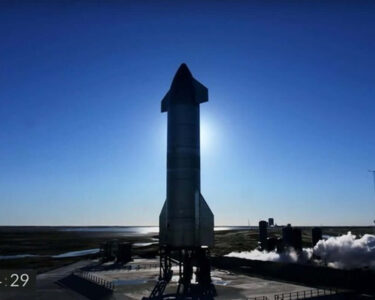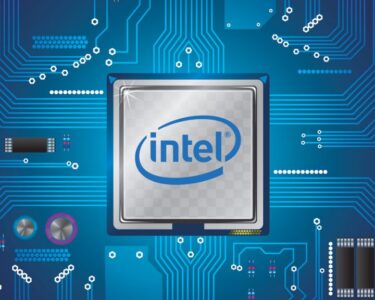In a surprising move, Huawei Technologies has achieved a significant breakthrough in advanced chip manufacturing, shedding light on China’s determination and capability to combat U.S. sanctions. However, this accomplishment comes at a potentially steep cost and may trigger tighter restrictions from Washington, according to industry analysts.
The unveiling of the latest Mate 60 Pro smartphone by Huawei during the visit of U.S. Commerce Secretary Gina Raimondo to China caught many off guard. This announcement coincided with the Chinese government’s preparation of a substantial $40-billion investment fund aimed at bolstering its burgeoning chip sector. The Mate 60 Pro boasts the Kirin 9000s, Huawei’s proprietary chip, which is manufactured by China’s leading contract chipmaker, SMIC, using advanced 7 nanometer (nm) technology, as reported by Ottawa-based TechInsights.
The performance assessments and feedback from early users suggest that China is indeed making strides in developing high-end chips. This progress is noteworthy, given that the U.S. has steadily increased sanctions in recent years to curtail China’s access to advanced chip manufacturing tools. Dan Hutcheson, an analyst at TechInsights, noted that this achievement demonstrates China’s semiconductor industry’s technical prowess without the use of extreme ultraviolet lithography (EUV) tools, which are typically employed for creating 7 nm or more advanced chips. He also highlighted the resilience of China’s chip technology capabilities, despite external restrictions.
EUV, or extreme ultraviolet lithography, is a technology used to produce advanced chips with a process size of 7 nm or smaller. This achievement by China is not only a technical milestone but also a geopolitical challenge to countries that have sought to limit China’s access to critical manufacturing technologies. Jefferies analysts suggested that TechInsights’ findings might trigger an investigation by the U.S. Commerce Department’s Bureau of Industry and Security. This development could also fuel debates within the U.S. about the effectiveness of sanctions and potentially lead Congress to impose even stricter technology sanctions against China as part of a competition bill under preparation.
In light of these developments, it appears that the ongoing tech war between the U.S. and China is likely to escalate, according to Jefferies analysts.
As of the time of this report, the U.S. Department of Commerce had not issued a statement regarding these developments, and Huawei declined to comment. SMIC and China’s State Council, responsible for handling press inquiries on behalf of the Chinese government, did not immediately respond to requests for comments.
Notably, SMIC had previously been known for producing chips with a 14 nm process. However, in late 2020, it faced restrictions from Washington, preventing it from obtaining an EUV machine from Dutch firm ASML. Last year, TechInsights suggested that SMIC had managed to produce 7 nm chips by adapting simpler deep ultraviolet (DUV) machines that were still available for purchase from ASML. Some analysts, including those at Jefferies, raised the possibility that Huawei might have acquired the necessary technology and equipment from SMIC to produce the chip independently.
Regardless of the chip’s source, Tilly Zhang, an analyst at Gavekal Dragonomics, tempered enthusiasm by highlighting a low yield rate. This rate reduces the number of usable chips from each wafer and drives up costs. Additionally, new export controls imposed by the Netherlands are set to limit SMIC’s access to more immersion DUV machines, further complicating matters.
Zhang emphasized that the willingness to accept higher costs was primarily made possible through a combination of Huawei’s substantial financial resources and generous government subsidies. This suggests that the company may be able to sell phones using these chips at competitive market prices.
In a related development, it was reported that China is preparing to launch a state-backed investment fund with a goal of raising approximately $40 billion for its chip sector. This initiative reflects China’s determination to catch up with the U.S. and other global competitors in the semiconductor industry.
Research firms have speculated that SMIC’s 7 nm process may have a yield rate of less than 50%, well below the industry norm of 90% or higher. This limitation could result in shipments of only 2-4 million chips, potentially insufficient for Huawei to regain its former dominance in the smartphone market. Jefferies analysts anticipate that Huawei plans to ship ten million units of the Mate 60 Pro but may face challenges in procuring enough China-made 7 nm chips to meet this target.
In the event that 7 nm chips prove insufficient, Huawei may turn to 10 nm chips, but with an estimated yield rate of only 20%. This rate is significantly lower than the 90% typical for most consumer devices. The ongoing controls imposed by the U.S. have undeniably increased the costs associated with producing controlled technologies in China. As a result, it is widely speculated that the Chinese government is subsidizing these endeavors.
Huawei’s chip breakthrough serves as a testament to China’s determination and technological progress in the face of stringent U.S. sanctions. However, the challenges of low yield rates and cost implications, coupled with potential escalations in tech-related tensions between the U.S. and China, underscore the complex landscape of global technology competition. The outcome of this ongoing battle will undoubtedly have far-reaching implications for both nations and the global technology industry as a whole.





